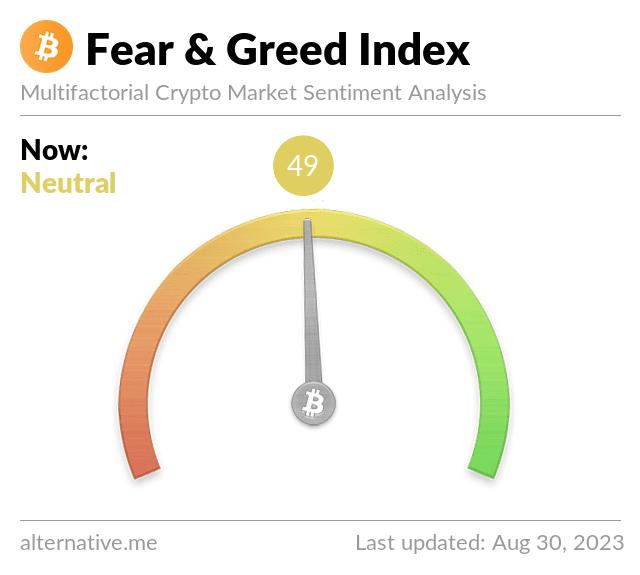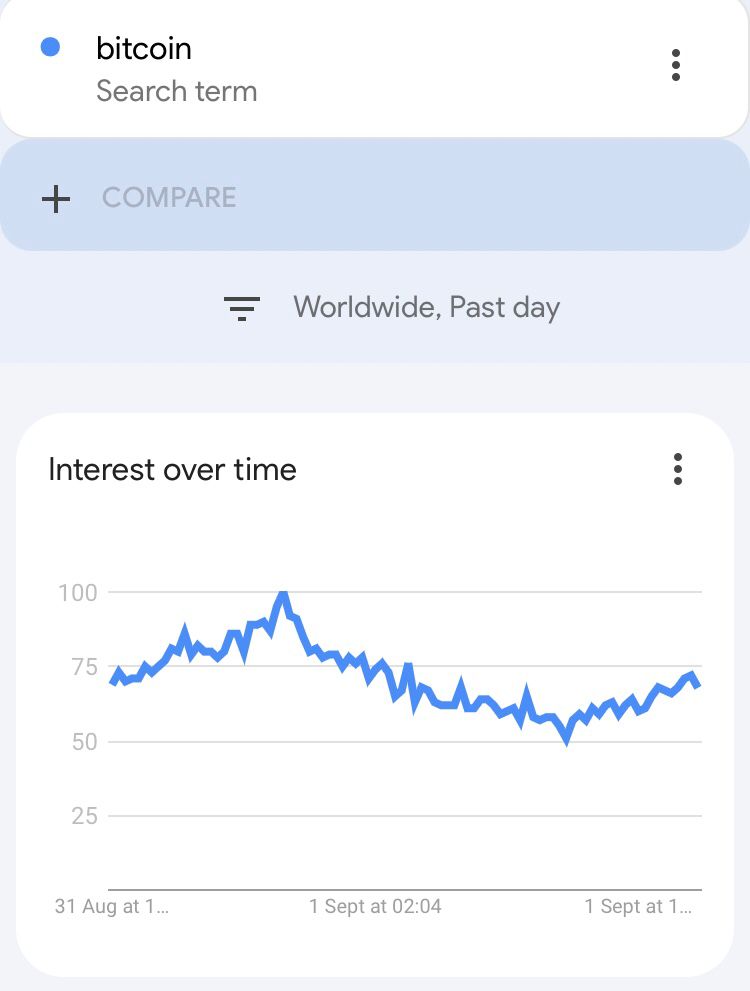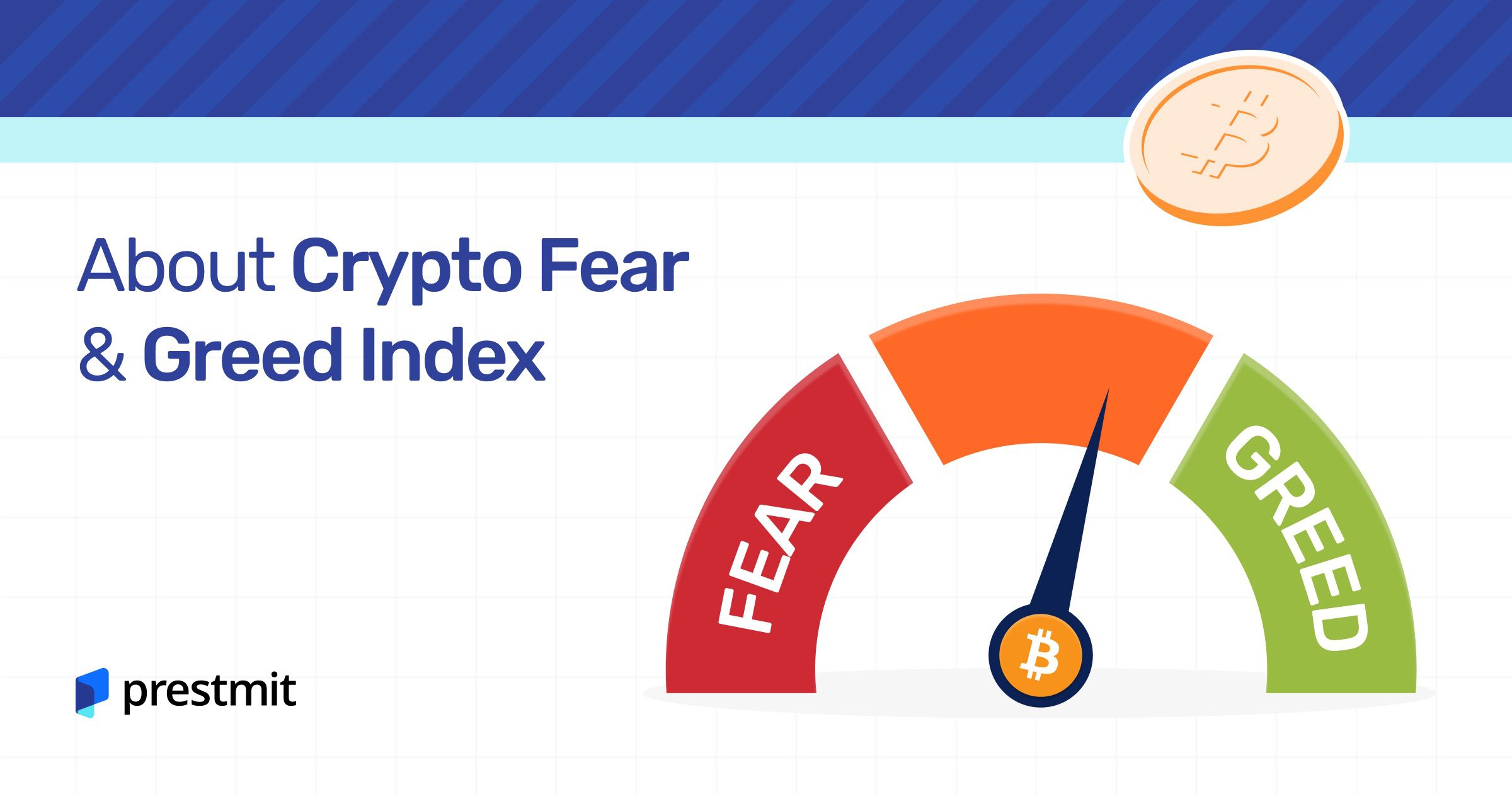Table of Contents
Human emotions play a crucial role in every decision, which is prevalent in the financial space. From trading to investment, the role of human emotions can not be overemphasized, and that is why analysts adopt market sentiment to measure the bullish and bearish run of every trade.
As such, the Crypto Fear and Greed Index assesses human emotions concerning buying and selling Bitcoin.
What Is Crypto Fear And Greed Index?

Crypto Fear and Greed Index is the measure of the overall sentiment of the crypto market. It is based on Bitcoin and other significant cryptocurrencies – which is assessed using social signals and market trends.
It uses multiple data sources to create a single figure because it is called an index.
This Crypto Fear and Greed Index utilizes Bitcoin price to gauge along extreme fear and extreme greed lines. This is based on market sentiment, a culmination of human emotions. So, it ranges from a scale of 0–100.
It should be noted that the fear and greed index was initially developed by CNNMoney but simulated by Alternative.me. Due to its efficiency in measuring market sentiment from traders, analysts use the tool in the crypto market.
This index is divided into four (4) categories:
- 0–24: Extreme fear (Orange)
- 25–49: Fear (Amber/Yellow)
- 50–74: Greed (Light green)
- 75–100: Extreme greed (Green)
How To Use The Crypto Fear And Greed Index
The crypto market is broadly volatile such that people can feel FOMO (Fear Of Missing Out) and become greedy when the market is experiencing a positive sentiment.
People can also become fearful of the tanking price of Bitcoin and other cryptocurrencies – leading to the selling of coins.
As a result, many crypto traders and investors use the index as a market indicator to give them an overview of when and how to trade smartly. Therefore, the Crypto Fear and Greed Index can help you to understand the following:
- Extreme fear could indicate a buying opportunity as traders or investors become worried.
- Extreme greed could indicate that traders and investors are greedy and there is a need for market correction.
How Crypto Fear And Greed Index Is Calculated
-
Volatility
Volatility is the primary metric used in the Crypto Fear and Greed Index. This is because of the role it plays in the crypto market. The current price volatility is compared to the averages of the past 30 and 90 days and commands 25% of the fear index cryptocurrency.
The likelihood of a fearful market fueling a bearish trend increases if there is significant volatility at these times.
However, consistent price growth over time could help the cryptocurrency to experience a more favourable market sentiment.
-
Market Momentum And Trading Volume
Market momentum measures the change in price over a specific period. However, this metric takes trading volume into account in addition to price. More investors participate in trading with higher volumes, leading to higher greed ratios and vice versa.
Analysts use a 30 to 90-day period to calculate the market momentum, accounting for about 25% of the Crypto Fear and Greed Index.
-
Social Media
Decision-making in crypto investment is also on the fulcrum of social media. As such, investors often offer financial advice on platforms like X (formerly Twitter) and Reddit.
This metric can indicate whether a bullish or bearish trend is imminent if it has a high engagement ratio.
The Crypto Fear and Greed Index keeps track of Bitcoin hashtags and mentions and compares them to historical averages.
A bull run is more likely when a higher engagement rate for tweets or posts about Bitcoin exists.
In this light, a spate of crypto traders use social media platforms to promote FOMO cases while providing financial advice.
That is why social media accounts for 15% of the Crypto Fear and Greed Index.
-
Market Survey
Surveys are a common practice for measuring market sentiment in the cryptocurrency space. This is not a new idea for any business.
This metric accounts for 15% of the Crypto Fear and Greed Index and is gathered weekly.
In most cases, the survey covers between 2,000 and 3,000 participants who are questioned about their opinions and the market space.
If the survey yields more favourable results, this might shift market sentiment in a bullish direction.
-
Bitcoin Dominance
Bitcoin is the most expensive crypto asset, with a market dominance of about 47.7%.
A high Bitcoin dominance during a market session may indicate a fearful market environment, even though the Crypto Fear and Greed Index primarily focuses on the Bitcoin asset.
Therefore, it may become unsuitable for investors to buy Bitcoin. This is because a high dominance may increase market fear.
Meanwhile, investors are known for huge profits, making them more greedy in an altcoins-dominated market.
This would, in turn, reduce Bitcoin’s market share. As such, Bitcoin dominance accounts for 10% of the index.
-
Google Search Trends
Google Trends uses data queries to highlight the inquiries made by search engine users over a specific period.
Here, the Crypto Fear and Greed Index may increasingly become extreme greed with an increase in the number of people asking questions about Bitcoin and other cryptocurrencies.

For instance, a rise in Google searches emphasizing how to buy Bitcoin could trigger a rally in the cryptocurrency market.
In contrast, increasing searches highlighting how to short Bitcoin could facilitate a price decline. So, search trends account for 10% of the index.
Benefits Of Using A Crypto Fear And Greed Index
The Crypto Fear and Greed Index can produce excellent results with balanced research and technical expertise.
First, the index gives advanced traders an overview of the general market mood to help them make better decisions.
Smart investors can use the Crypto Fear and Greed Index to create a new strategy in a market where everyone tends to follow the market leader.
For instance, in extreme greed, investors may decide to sell all of their cryptocurrency holdings because a sharp decline may occur soon.
Investors will panic and start selling off their assets once the price drops significantly. This offers investors yet another exceptional chance to stock up on purchases.
Secondly, the index can enable investors to be more cautious in their choice of investments. The indicator allows investors to understand the mood of the time and take advantage of the broad market trend.
Moreover, the Crypto Fear and Greed Index also effectively accomplishes the most straightforward tasks, indicating when an asset is undervalued (at 0 to below 50) and overvalued (at 50 and above).
Drawbacks Of Crypto Fear And Greed Index
Since long-term bear and bull runs typically include cycles of fear and greed, this indicator is not very good at predicting long-term crypto cycles, as several investors have noted.
The index’s inability to account for many variables is another drawback.
This is because Ethereum, the second-most valuable cryptocurrency, is not considered in designing the index.
It also excludes an extensive range of alternative coins with sizable market shares. The index downplays the influence that stablecoins and decentralized finance (DeFi) have had on the overall climate of the cryptocurrency industry.
The index also ignores the potential bull run preceding a Bitcoin halving event.
Frequently Asked Questions (FAQs)
What Is Bitcoin Fear And Greed Index?
The Bitcoin fear and greed index measures crypto investors’ major fear and greed during trading.
This highlights the emotional mood of the market sentiment of metrics like dominance, volatility, market survey, etc., to determine a short-term bear or bull market run.
How Do I Check My Crypto Fear And Greed Index?
Every crypto investor can check the Coinmarketcap website for the latest Crypto Fear and Greed Index.
This platform gives a real-time overview of the sentiments bordering on the crypto market to inform the decision of investors on when best to buy or sell cryptocurrencies like Bitcoin.
What Is the Ethereum Fear And Greed Index?
Ethereum Fear and Greed Index is the measure of the market sentiment of Ethereum by its traders and investors. This index is on a scale of 0–100, which works similarly to the Crypto Fear and Greed Index.
At the time of my writing, the Ethereum Fear and Greed Index is neutral at the 39 mark. But this might change after 24 hours as it is a daily report of the sentiment and performance of Ethereum.
In this instance, I recommend Ethereum Fear to Ethereum traders and investors to understand how the asset is thriving with respect to market sentiment.
Conclusion
Crypto trading is a process that requires an apt understanding of the performance of Bitcoin, which is the powerhouse of the crypto market.
This is because a trading tool like the Crypto Fear and Greed Index helps you decide when it is the best time to trade your crypto assets.
However, crypto investors need to monitor this index daily as it is subject to change with time and market sentiments.
Last updated on February 7, 2024

